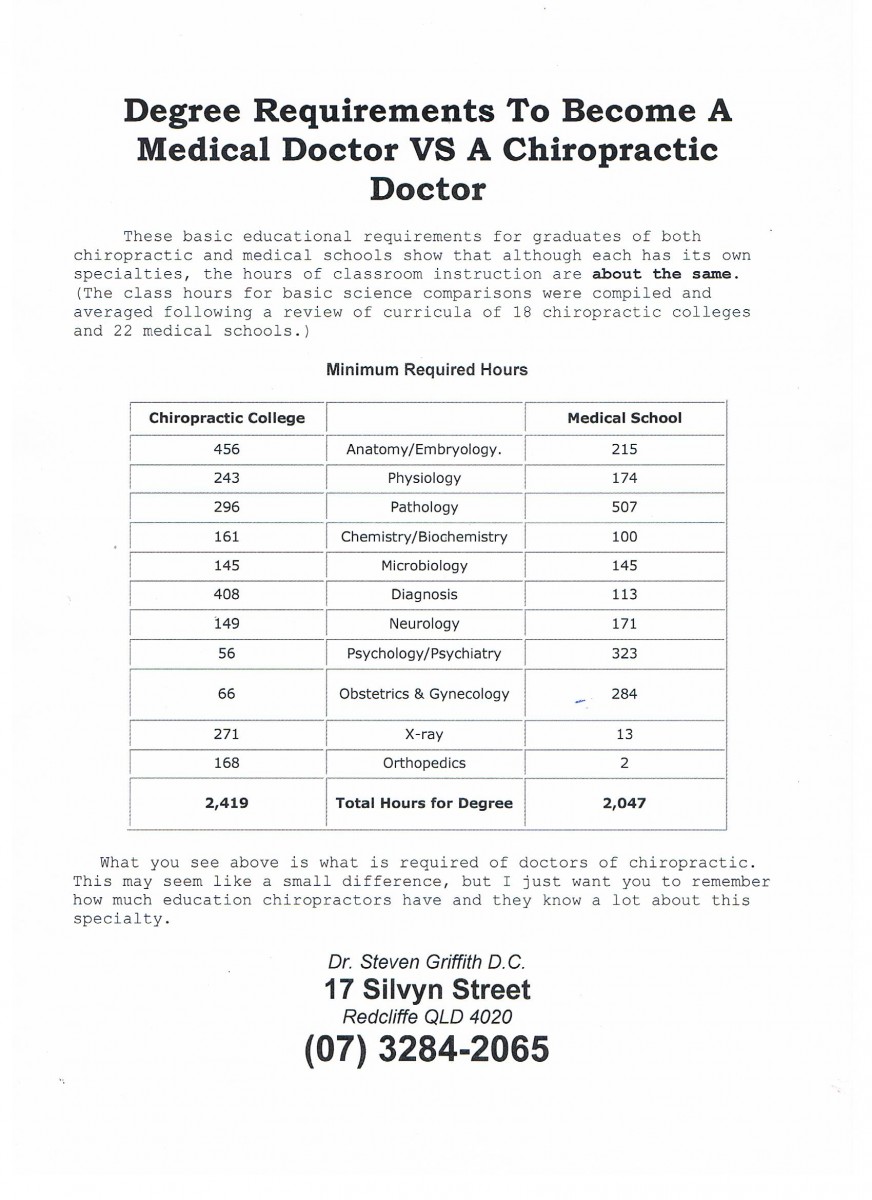Chiropractic VS a Medical Doctor
- Home
- Chiropractic VS a Medical Doctor
Chiropractic VS a Medical Doctor
Paragraph 2 is on Stats for DC v MD basic sciences training showing the quality of training in both profession is similar in most areas
(1) Three Reasons to Choose Chiropractic
Superior patient satisfaction ratings, reduced costs, similar outcomes to medical care, suggests latest study.
By Editorial Staff 10 November 2015 Dynamic Growth
Considering the percentage of patients who’ve either never seen a DC (meaning they likely visit a medical doctor first / exclusively) or have seen a DC, but no longer do (suggesting they currently go to an GP first / exclusively), it’s big news when you can compare the two provider types, particularly when it comes to managing musculoskeletal conditions.
After all, what better way to influence patient perception, payer behaviour and health care policy than by proving chiropractic is effective, reduces health care costs and leaves patients at least as, if not more satisfied than medical care? The latest conclusions, courtesy of the authors of a Swiss study published in JMPT:
“The findings of this study support first-contact care provided by DCs as an alternative to first-contact care provided by GPs for a select number of musculoskeletal conditions. Restrictive models of care in which patients are required to contact a medical provider before consulting a chiropractic provider may be counterproductive for patients experiencing the musculoskeletal conditions investigated and possibly others.”
The study sample included 403 patients who saw medical doctors and 316 patients who saw doctors of chiropractic as the initial health care providers for their spinal, hip or shoulder pain complaint. Four months following care, all patients completed a questionnaire that evaluated pain on that day and four months earlier (11-point numeric rating scale); satisfaction with care received and the results of that care (5-point Likert scale from “very satisfied” to “very unsatisfied”); and other variables. The researchers evaluated related costs of care by reviewing an insurance claims database.
“Patients initially consulting GPs had significantly less reduction in their numerical pain rating score (difference of 0.32) and were significantly less likely to be satisfied with the care received (odds ratio = 1.79) and the outcome of care (odds ratio = 1.52).” Average per-patient costs over the four-month period were significantly lower in patients who initially consulted DCs ($368 difference compared to GP care).
Despite these findings, the authors noted: “Although the differences in pain relief scores between groups were statistically significant, they were likely not of clinical significance.” That doesn’t invalidate the similar results achieved between provider types, of course.
The study authors also speculated direct access to chiropractic care could help medical doctors and advance collaborative care: “In addition to potentially reducing health care costs, direct access to chiropractic care may ease the workload on GPs, particularly in areas with poor medical coverage and hence enabling them to focus on complex cases. The minority of patients with complex health problems initially consulting a chiropractic provider would be referred to, or comanaged with, a medical provider to provide optimal care.”
JMPT Editor-in-Chief Claire Johnson, DC, MEd, emphasized the importance of the latest findings: “Comparative studies – in other words, research that compares the outcomes between two different providers or modalities – are rare for chiropractic care,” she said. “Thus, this study by Houweling, et al., is especially important if payers and policy-makers are to better understand the ‘triple aim’ as it relates to chiropractic. Specifically, this study helps us better understand what type of care provides better patient satisfaction, is more cost effective, and improves population health.”
Resources
- Houweling TAW, et al. First-contact care with a medical vs chiropractic provider after consultation with a Swiss telemedicine provider: comparison of outcomes, patient satisfaction, and health care costs in spinal, hip, and shoulder pain patients. JMPT, 2015 Sep;38(7):477-83.
- “Gallup – Palmer College of Chiropractic Inaugural Report: Americans’ Perceptions of Chiropractic.” Findings released Sept. 8, 2015.
(2) Redcliffe Wellness Chiropractic VS a Medical Doctor: USA stats 2012, as referenced from DG & WFCC 2012 Conference notes

